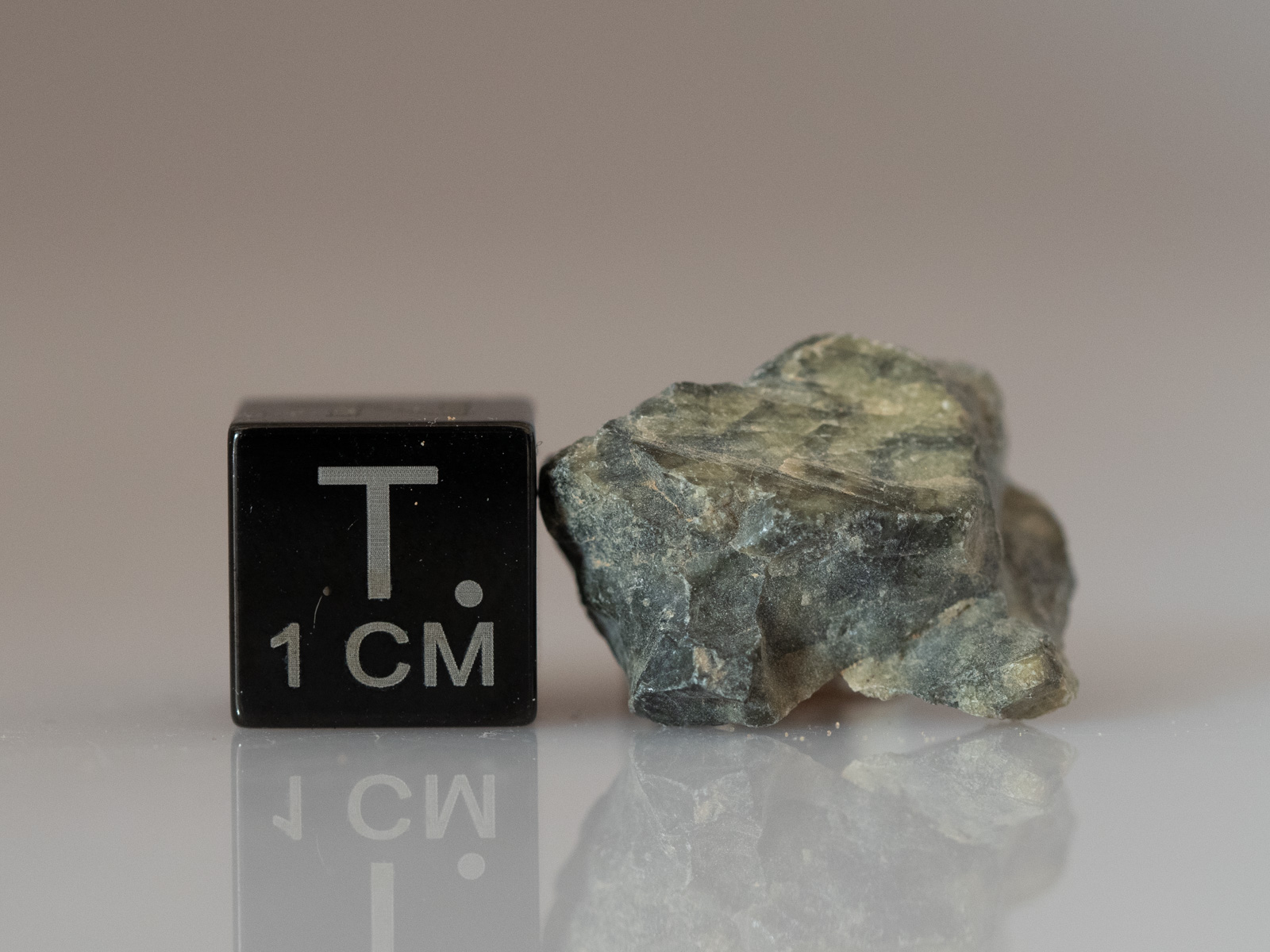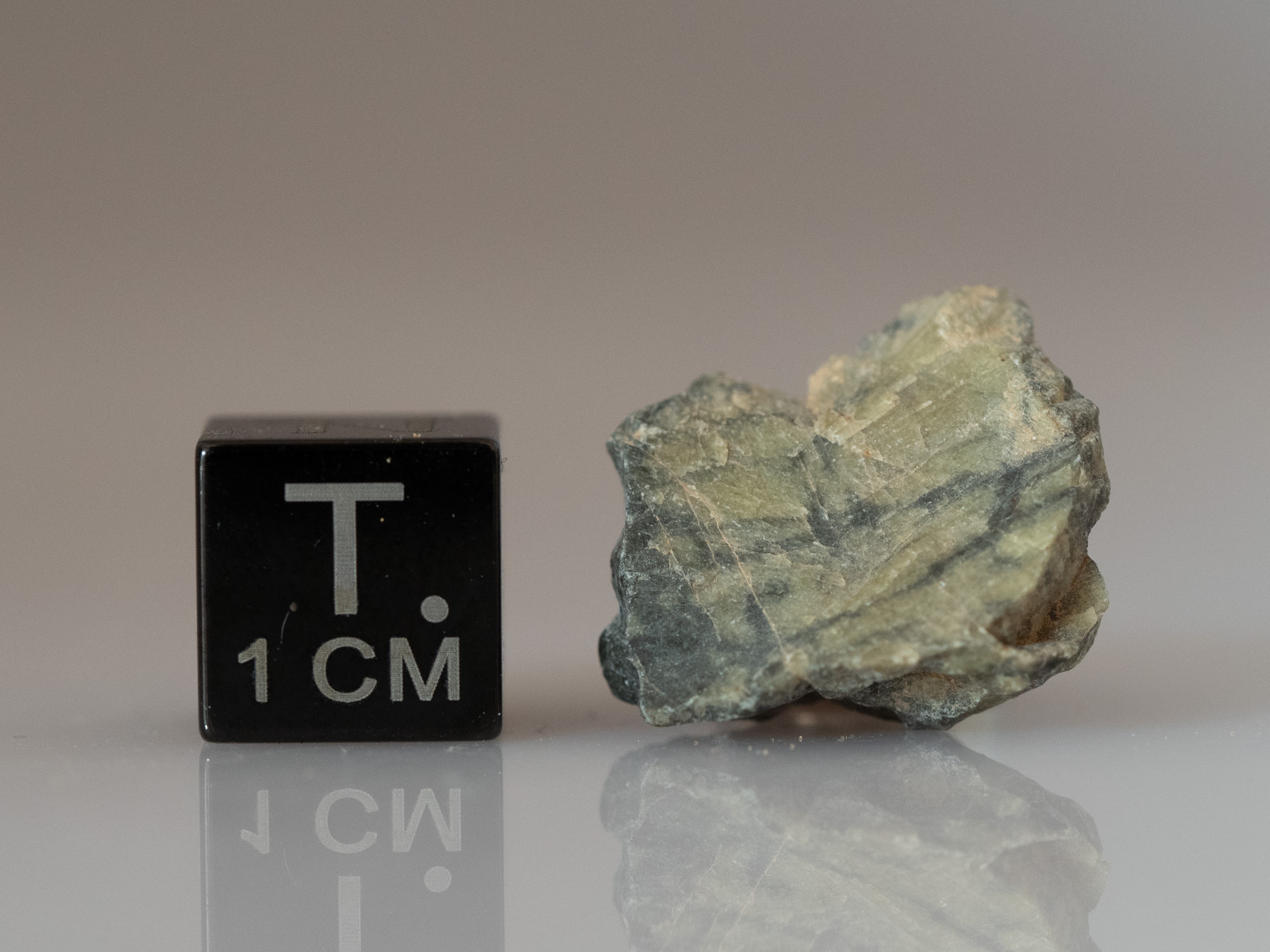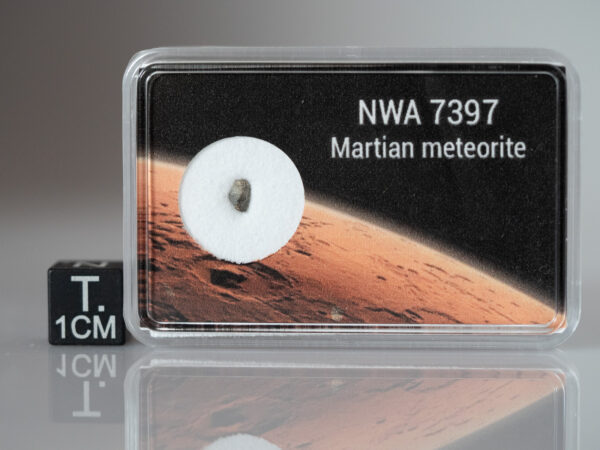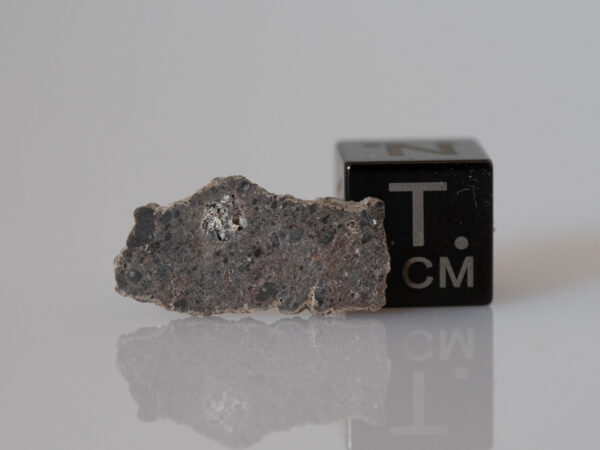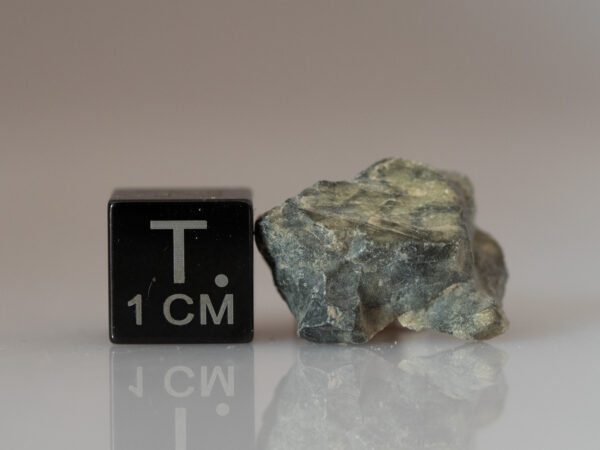Description
On offer: a 3.32g fragment.
Dimensions: ~15 x 14 mm
What you get: this 3.32g fragment, a plastic box with label at the back, a signed Certificate of Authenticity.
Type: Diogenite
Country: Tunisia
Date of fall: June 27, 1931
Total mass: ~5 kg
The meteorite of Tatahouine fell june 27, 1931, 4 kilometers northeast of the city then called Foum Tatahouine. French soldiers from an Infantry Battalion of Africa quickly recovered more than 10 kilograms of fragments that were sent to the National History Museum of Paris. The famous geologist Lacroix went there and published a study on the fall, indicating the location of three small craters where most specimens were discovered. No more extensive research was undertaken on site until 1994, when Alain Carion found the study of Lacroix in the archives of the National Library in Paris. He went to Tatahouine and recovered a large number of fragments. Today, the site has been transformed into a garbage dump and houses are built on the edge of the area, making it a place nearly impossible to search.
Tatahouine meteorite is a diogenite, an achondrite coming from a Vesta-type asteroïd.

